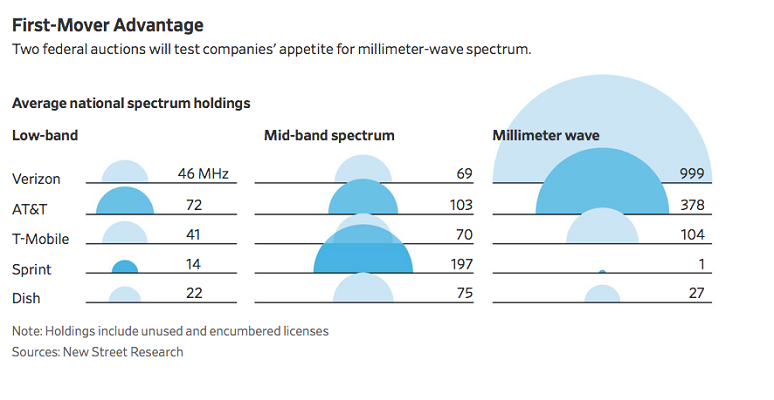U.S. mobile service provider spectrum holdings and spectrum strategies are changing very rapidly, in part because of the proposed T-Mobile US merger with Sprint, the emergence of Dish Network as a new provider, and very-active spectrum auctions.
Though scale is a clear advantage of the proposed T-Mobile US merger with Sprint, spectrum acquisition is key. A merged Sprint plus T-Mobile US would have huge spectrum assets, compared to all other leading mobile providers.
Also, Verizon’s relative spectrum paucity also is clear. Verizon has more customers to support on its network than does T-Mobile US or Sprint, for example, and arguably the most to gain from using small cells to intensify its spectrum reuse.
Also, spectrum holdings have changed over the past couple of years, particularly because of millimeter wave holdings added by Verizon.
By some estimates, Sprint has the most mid-band spectrum (labeled by Cowen as "high band").
Though Verizon in 2018 had about the same amount of spectrum as T-Mobile US, it had twice the number of subscribers, and three times the number of Sprint, which had almost twice the spectrum.

No comments:
Post a Comment